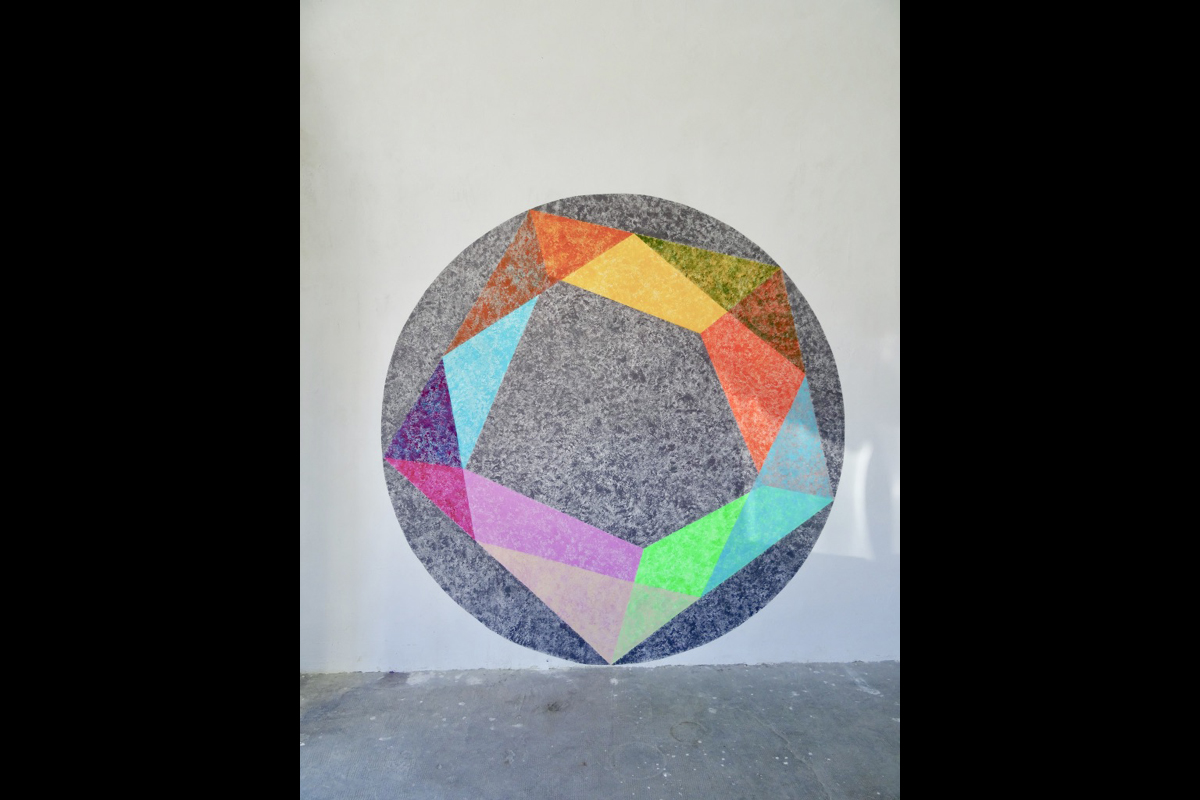TAGLIO CRISTALLO
16.07.2016 – 30.07.2016
Since the production of his de-constructivist sculptures and objects in the early 1980`s, the constituent parts of Zoderer`s early work – mostly found, used elements – have given way to the employment of brand new, manufactured materials, whose sensual opulence, formal and textural diversity, variety of colors, and unlimited availability, constitute an inexhaustible physical resource for his artistic practice. In his recourse to industrial materials, Zoderer not only undermines any references towards Constructivism and Concrete Art, but also with a refreshing irony broadens the perspective on the reciprocal transfer between the material realities of art and life. `Since the beginning of his artistic career in the 1980`s the field has been under influence of demontage, decoding and deconstructing. With the gaze of a lover, Zoderer encompasses the everyday world of objects, which he abducts into he world of the plastic arts. Aesthetic conventions and assumptions of value are twisted and turned, questioned for content and substance and placed in a different context, using methods of disavowal and ironization. Affirmative with regards to a love for the world of things, reflective with regard to their function, determination and meaning, Zoderer connects the everyday and art, as two systems separated by convention, in order to bring their aesthetic and communicative potential to the fore. `( Elisabeth Grossmann, 1999)
TAGLIO CRISTALLO
At DAC , Zoderer presents a series of small-scale maquettes, ideas for large-size sculptures along with a site-specific wall-painting and a an assemblage of works on papers.
Beat Zoderer nato nel 1955 a Zurigo, vive e lavora a Wettingen, in Svizzera, e a Genova, in Italia.
Con la produzione delle sue prime sculture e oggetti decostruttivisti all’inizio degli anni ’80, Zoderer ha inaugurato l’impiego di nuovi materiali, la cui voluttuosa abbondanza, consistenza, varietà cromatica e illimitata disponibilità, costituiscono una risorsa inesauribile per la sua pratica artistica. Nel suo ricorso ai materiali industriali, l’artista non solo respinge qualsiasi riferimento al costruttivismo e all’Arte Concreta, ma, con fresca ironia, allarga la prospettiva sul reciproco transfer fra arte e vita. “Zoderer è da sempre un fautore della scomposizione, della decodificazione e della decostruzione. L’artista guarda e attinge con amore agli oggetti, sottraendoli alla loro quotidianità, per trasformarli in opere plastiche. Convenzioni estetiche e valori formali vengono distorti e capovolti, contenuti e sostanza scandagliati e inseriti in un contesto diverso, attraverso il metodo del disconoscimento e dell’ironia. Zoderer manifesta amore nei confronti delle cose, riflette sulla loro funzione, definizione e significato, stabilendo un legame fra arte e vita quotidiana, fra due sistemi contrapposti per convenzione, e dando risalto alle loro potenzialità estetiche e comunicative”.
[da: Elisabeth Grossmann, Das Rohe und das Gekochte, in: Beat Zoderer, Für alle Fälle, Nürnberg, Verlag für Moderne Kunst, 1999, p. 69]
*1955 à Zurich, Suisse / Vit et travaille à Wettingen, Suisse et à Genova, Italie
Depuis la production de ses sculptures et objets déconstructivistes au début des années 80, les parties constituantes de l’œuvre des débuts de Zoderer – souvent des objets trouvés, usagés – ont été remplacés par des matériaux neufs, manufacturés, dont l’opulente sensualité, la texture formelle et diversifiée, la variété des couleurs et la disponibilité illimitée constituent une ressource inépuisable. Dans son recours aux matériaux industriels Zoderer non seulement subvertit toutes références au Constructivisme et à l’Art Concret, mais aussi, avec une ironie rafraichissante il élargit la perspective du transfert réciproque entre les réalités matérielles de l’art et celles de la vie.“Depuis le début de sa carrière artistique dans les années ’80 le domaine subit l’influence du démontage, du décodage et de la déconstruction. Avec le regard d’un amant, Zoderer connecte le quotidien et l’art, tels deux systèmes séparés par les conventions, afin mettre en avant leur potentiel esthétique et communicatif. “
[Elisabeth Grossmann, Das Rohe und das Gekochte, dans: Beat Zoderer, Für alle Fälle, Nürnberg, Verlag für Moderne Kunst, 1999, p. 69]



